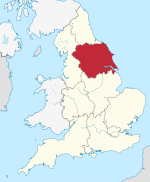| Glanford Power Station | |
|---|---|
 Glanford Power Station | |
 | |
| Country | England |
| Location | Lincolnshire, East Midlands |
| Coordinates | 53°37′19″N0°42′01″W / 53.62199°N 0.700364°W |
| Status | Operational |
| Commission date | 1993 |
| Operator | Fibrogen |
| Thermal power station | |
| Primary fuel | Biofuel |
| Power generation | |
| Nameplate capacity |
|
| External links | |
| Commons | Related media on Commons |
grid reference SE859147 | |
Glanford Power Station is an electricity generating plant located on the Flixborough industrial estate near Scunthorpe in North Lincolnshire. It generates around 13.5 megawatts (MW) of electricity, which is enough to provide power to about 32,000 homes. It was designed to generate electricity by the burning of poultry litter, and was only the second of this kind of power station in the world to have been built when it went into operation in 1993. The station is owned by Energy Power Resources (EPR) and operated by its subsidiary Fibrogen.
